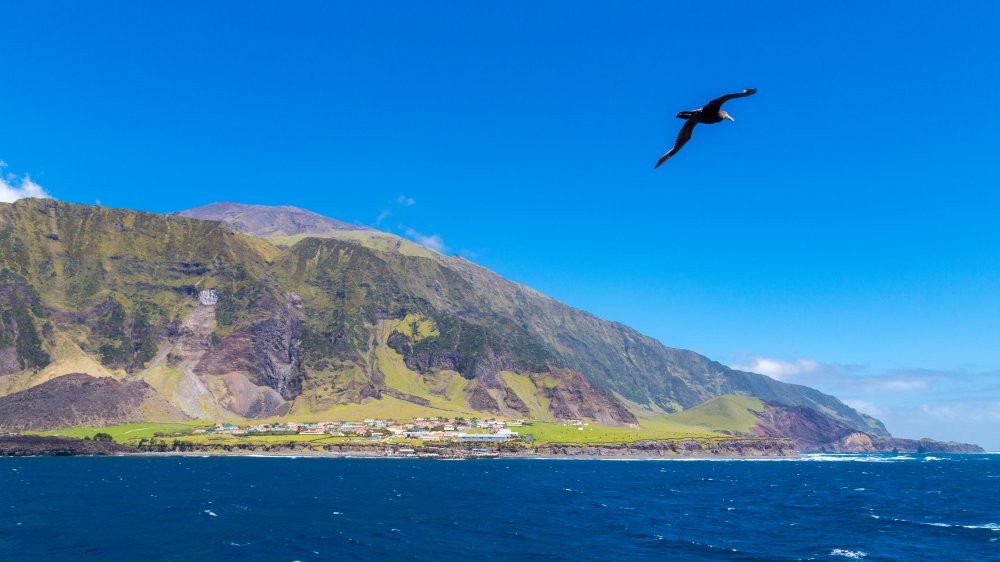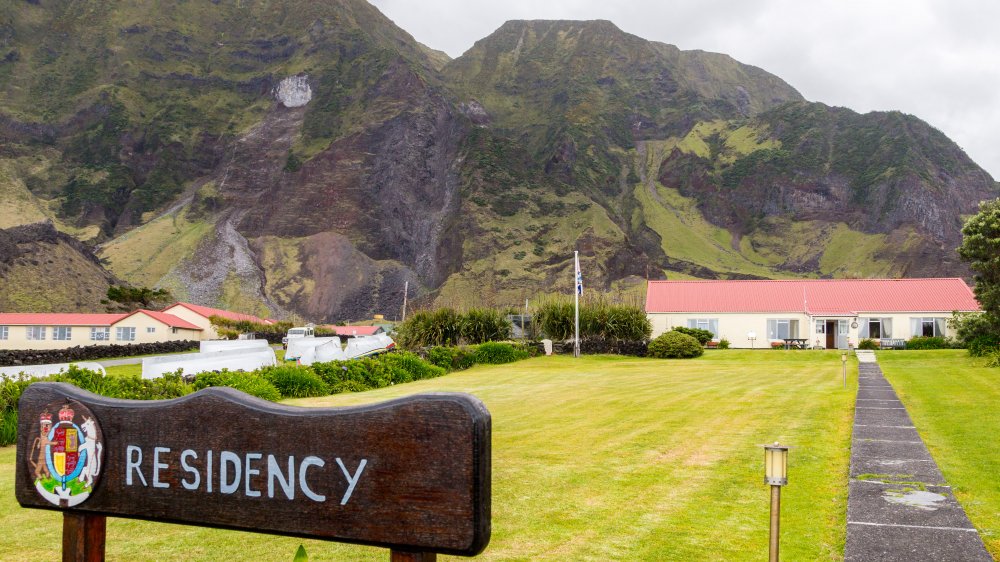The Truth About The Most Remote Island In The World
If you ever want to get away from it all (and not just go to that one town where cell phones are illegal), you should consider looking into moving to one of the most remote inhabited islands in the world. Unfortunately, it's not one of those remote places that'll pay you to live there, but hey.
Tristan da Cunha, a chain of islands in the southern Atlantic Ocean, is the location in question. It's made up of the main inhabited island Tristan da Cunha, Gough Island with its wildlife reserves, the Inaccessible Island, and the smaller uninhabited Nightingale Island. People living on the island, according to the official website of Tristan da Cunha, they carry British Overseas Territory citizenship.
Per the island's website, it was first discovered by the Portuguese explorer Tristao da Cunha, in 1506, when he was on his way to the Cape of Good Hope. Then, in 1643, a group of Dutch sailors landed on the island, and wanted to establish a supply base there. Tristan da Cunha then changed hands from the Dutch to the Americans, and then finally to the British, who made it into their garrison. How Stuff Works explains the British began abandoning the island as a strategic base, but many settlers decided to stay and built a community. Tristan da Cunha spent several years in isolation, particularly during the First World War, but soon scientists began studying the wildlife on Gough island and it became an important research stop.
Make sure you have enough vacation days if you visit
These days Tristan da Cunha is a thriving community where many inhabitants share some ancestors. The New York Times reports most islanders share seven surnames among them — those of the settlers that chose to stay — Glass, Swain, Hagan, Green, Repetto, Lavarello, and Rogers. While many inhabitants evacuated the island in a 1961 volcanic eruption, most of them returned, and their descendants remain.
Today, the island still retains its old-world charm. Its official website states there is only one two-story building in Tristan da Cunha, which houses an internet cafe and the island's government offices. It doesn't have an airport, so anyone who wants to visit the island must book passage on a supply ship coming from Cape Town in South Africa. And once you get there, you might be there a while, since there are usually only three ships going to the island that make nine round-trips a year. The island's remoteness, says the New York Times, creates a close sense of community.
So if you want to leave everything behind, maybe consider Tristan da Cunha. Maybe wait until worldwide events calm down a bit, though, before you go there.

